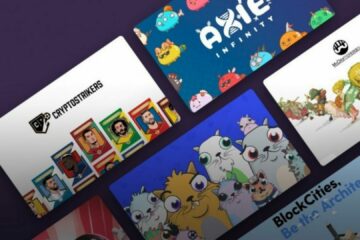Non-fungible tokens or NFTs – products that function as digital assets – have grown to reach a market of $ 250 million (€ 207 million), according to a 2020 report by L’Atelier BNP Paribas and nonfungible.com. And the creators of NFT are making millions. On Sunday, singer Grimes pocketed $ 5.8 million (4.8 million euros) in less than 20 minutes by selling her digital collection “WarNymph” on NFT’s sales platform, Nifty Gateway.
NFT collectors have also benefited from the boom in digital tokens. Last week, a collector sold a 10-second artistic music video for $ 6.6 million (€ 5.5 million) after purchasing the Beeple Project for $ 67,000 (approximately € 55,500) in October. According to the report, investments in NFTs grew 299% in 2020, gaining popularity as cryptocurrencies like bitcoin continue to boom.
However, NFTs work differently from digital currencies. Unlike popular cryptocurrencies like Bitcoin and Ether, NFTs cannot be traded directly with each other.
NFTs are a special category of digital goods that cannot be traded with each other for equal value or broken down into smaller values like most digital currencies. No NFT is identical to another, they are characterized by their unique qualities, as well as their authenticity. They often function as a sort of collector’s item and cannot be duplicated.
NFT products encompass a whole range of elements, from crypto artwork and digital fashion items to collectible sports cards, virtual real estate and game characters.
Globally recognized brands like Nike, Louis Vuitton, as well as the NBA have already started producing goods and services based on NFT technology. According to digital commerce site Crypto Slam, some of the best-selling NFT brands include NBA Top Shot, Crypto Punks, and Street Fighter.
The most popular NFT platform – NBA Top Shot – has sold almost $ 270 million (224 million euros) worth of unique NBA videos. According to Crypto Slam, the platform has seen sales of around $ 10 million (€ 8.3 million) in the past 24 hours.
Another popular NFT, CryptoPunks, was one of the first NFTs sold on the Ethereum blockchain in 2017 – the second largest cryptocurrency platform, after bitcoin.
NFT tokens can be purchased with digital currencies
To buy an NFT, buyers must use digital currencies like Ethereum from Ethereum (ETH) or World Asset eXchange (WAX). While ETH is one of the most popular currencies in NFT, each platform chooses its digital wallet service. WAX is popular for NFT purchases related to virtual characters and video games.
The new NFTs have already started to gain momentum. Street Fighter – an NFT that came out just over a week ago – has already reached the top 10 most traded digital assets. Street Fighter uses WAX technology and allows collectors to own unique characters from the 1987 arcade game.
One of the most popular sectors of the NFT is the “Multiverse”, which includes digital goods that can be purchased for an alternative fully virtual reality. NFT buyers interested in virtual assets can purchase digital land and real estate, as well as virtual gaming tokens.
Why are NFTs worth millions of dollars?
NFTs derive their value from the same deflationary principles as bitcoin – the number of tokens is limited and the articles cannot be replicated.
Authenticity also plays a role in the rise of NFTs. Tokens are easily verified and can always be traced back to the original creator. Thus, owners of NFT tokens are able to fully own these individual digital assets knowing that they own the only such token.
The value of NFTs is also based on the immutability of the product. NFTs cannot be destroyed, deleted or duplicated. The token only exists on its native platform, stored on the blockchain. Items from one platform cannot be moved to another.
The Nonfungeable.com site found that the number of NFT buyers increased by 66% in 2020, while the value of transactions rose from around $ 63 million to $ 250 million (52 to 207 million euros).
The creation of Bitcoin introduced the concept of a digital scarcity without a trusted third party. Before that, the cost of replicating a digital world object was close to nothing. With the advent of blockchain technology, programmable digital scarcity has become possible, and it is now used to match the digital world to the real world.
Non-fungible tokens (NFTs), also known as crypto collectibles, take advantage of this idea. Unlike cryptocurrencies, where all tokens are created the same way, non-fungible tokens are unique and limited in quantity.
NFTs are one of the main building blocks of a new digital economy powered by blockchain. Several projects are experimenting with NFTs in different use cases, such as games, digital identity, licenses, certificates and art. Plus, they can even allow fractional ownership of high-value items.
NFTs have become much easier to issue, and we are seeing increasing amounts created every day. This article details what NFTs are, their use cases, and how a game called CryptoKitties congested the Ethereum blockchain in late 2017.
A non-fungible token (NFT) is a type of cryptographic token on a blockchain that represents a single asset. These can be fully digital assets or tokenized versions of real assets. Since NFTs are not interchangeable, they can serve as proof of authenticity and ownership within the digital realm.
Fungibility means that the individual units of an asset are interchangeable and fundamentally distinctive from one another. For example, fiat currencies are fungible because each unit is interchangeable with any other equivalent individual unit. A ten dollar bill is interchangeable with any other genuine ten dollar bill. This is imperative for an asset with the objective of acting as a medium of exchange.
Fungibility is a desirable characteristic of a currency because it allows free trade. Moreover, there is theoretically no way to know the history of each individual unit. However, this is not a beneficial feature for collectibles.
How do NFTs work?
There are different frameworks for the creation and issuance of NFTs. The most important is ERC-721, a standard for issuing and trading non-fungible assets on the Ethereum blockchain.
A newer and improved standard is ERC-1155. It allows a single contract to contain both fungible and non-fungible tokens, opening up a whole new range of possibilities. Standardizing NFT’s issuance allows for a greater degree of interoperability, which ultimately benefits users. Essentially, this means that unique assets can be transferred easily between different applications.
Binance Smart Chain (BSC) has its own NFT standards: BEP-721 and BEP-1155. These offer similar functionality to the Ethereum standards mentioned earlier. Both have become attractive to creators looking to build NFTs, as the cost is significantly lower than Ethereum.
If you want to preserve and contemplate the beauty of your NFTs, you can do so on Trust Wallet. Just like other blockchain tokens, your NFT will exist on an address. It is important to note that NFTs cannot be replicated or transferred without the permission of the owner, even by the issuer of the NFT.
NFTs can be traded on open marketplaces including Treasureland, BakerySwap, and Juggerworld on BSC, as well as OpenSea on Ethereum. These markets connect buyers and sellers, and the value of each token is unique. NFTs are naturally subject to price changes in response to market supply and demand.
But how can such objects have any value? As with any other item of value, value is not inherent in the item itself, but rather is attributed by people who deem it valuable. In essence, value is a shared belief. It doesn’t matter if it’s fiat money, precious metals, or a vehicle, these items are valuable because people think they have them.



0 Comments